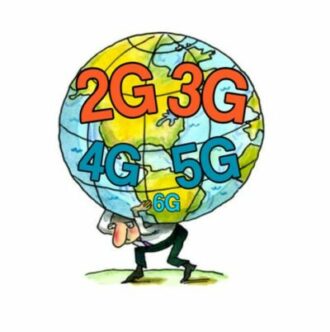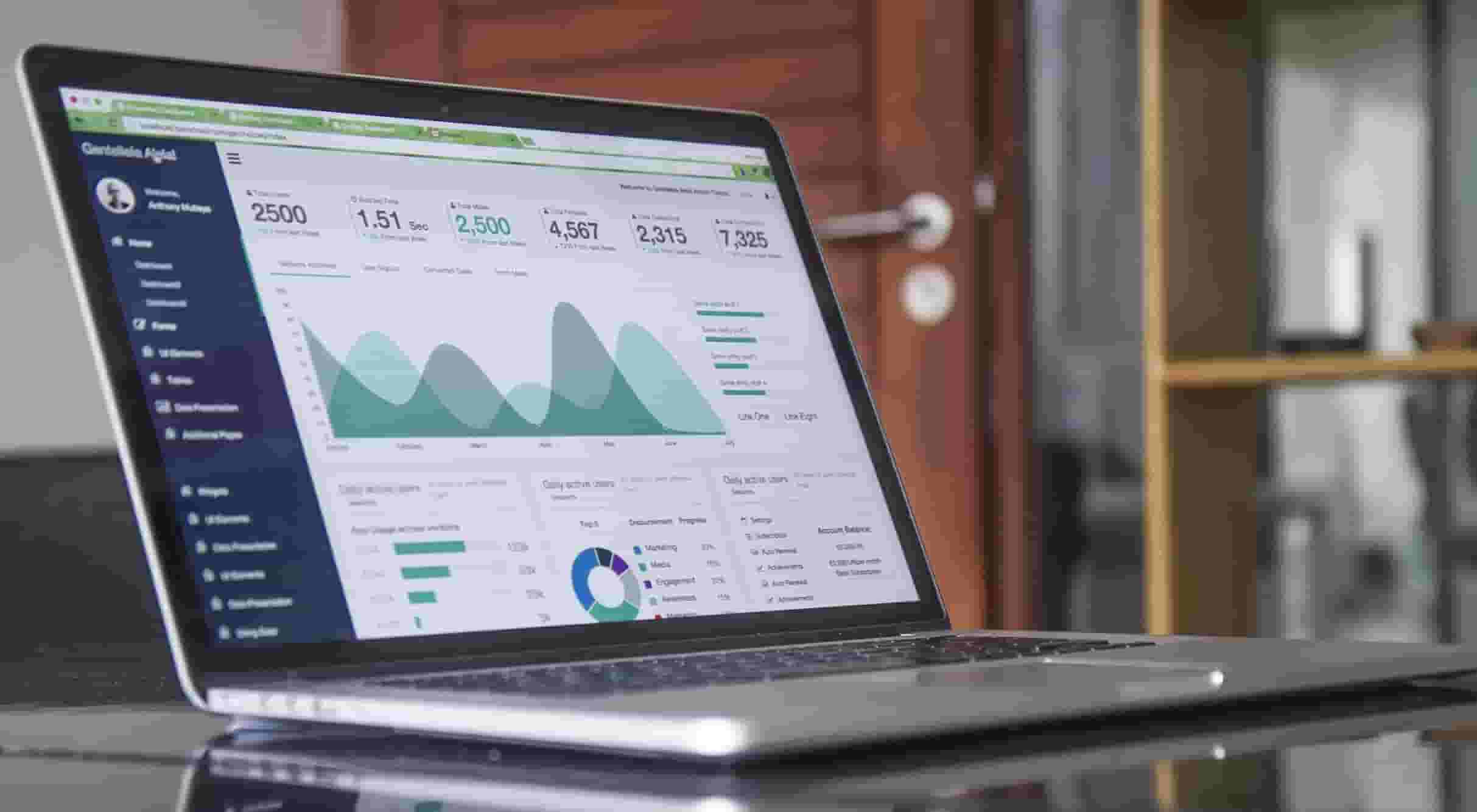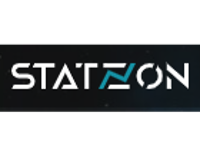MTN Consulting is focused on network operators & their technology supply chains, tracking the economics of the network operator business and assessing the big shifts that impact technology spending trends. Our coverage includes:
3 major network operator markets
- Telecom Network Operator (TNO)
- Webscale Network Operator (WNO)
- Carrier-Neutral Network Operator (CNNO)
190+ operators
Across the three major network operator markets in all key regions
40+ time series
10+ years’ market- and operator-wise data across quarters and years starting 2011
~50 reports published per year
- Market data and insight reports spanning –
- quarterly market reviews
- operator and vendor deep dives
- benchmarking and strategic assessments
- forecast/outlook analysis

Latest report
Webscale Market Tracker, 2Q25: AI’s drunken sailors push 12 month capex to $400B, tech share hits all-time high of 60%
Cloud drove previous webscale surges, but investor excitement around artificial intelligence is driving this one. Unfortunately, this latest surge has been firmly in bubble territory for several quarters and there is significant downside risk for a crash. A crash is overdue, in our opinion, as this market is plagued by insane levels of hype but very little in the way of proven business models. AI spend has been propped up by a combination of US government subsidies, mass market consumer interest (but very little willingness to pay), a self-reinforcing loop between buyers and sellers, and AI hypemasters eager to be first - even if they have no idea what benefits this may deliver, if any. Webscale's AI-driven infrastructure buildout keeps breaking records. In 2Q25, the 25 companies in our Webscale Tracker generated $722 billion (B) in revenue (+14.1% YoY), spent $122B on capex (+77.0%), poured $93B into R&D (+17.8%), and held $629B in cash (flat YoY) against $567B in debt (+8.9%). Net PP&E surged 38.9% YoY to $1.111 trillion. Headcount hit 4.28M (+1.2% YoY). Notes: (1) This is MTN Consulting's 31st quarterly assessment of the webscale market, part of a series we launched in 4Q17; our data and analysis spans the 1Q11-2Q25 timeframe, i.e. 50 quarters. (2) The 25 companies in our study include several recent additions: CoreWeave (added last year), and this quarter's three new adds: Kuaishou, Nebius (Yandex spinoff), and Xiaomi. 🔹 Revenue: Growth Concentrated in the Big Four 2Q25 revenue hit $721.7B (+14.1% YoY), pushing annualized sales to $2.82 trillion (T). Nebius, CoreWeave and Yandex posted the fastest growth, but the first two are new companies and the third is impacted by recent USD-RUB exchange rate fluctuations. The heavy lifting came from Amazon (revenues up 13.3% YoY to $167.7B), Alphabet (+13.8% to $96.4B), Microsoft (+18.1% to $76.4B), JD.Com (+22.5% to $49.3B), and Meta (FB) (+21.6% to $47.5B). Incidentally, JD.Com may be removed from our database at some point since it has deconsolidated its cloud unit and has no clear plans to reverse this decision. Its energy intensity is relatively high, like other webscalers, but it spends just over 1% of revenues on capex; the company is unlikely to challenge China's leading webscalers with established data center footprints (Alibaba, Tencent, Huawei). At the other end, two companies saw revenues fall between 2Q24 and 2Q25: Fujitsu, down 2.6% YoY to $5.2B as it exited some European markets; and Baidu, down 3.5% YoY to $4.5B due to a significant drop in advertising revenue. Alibaba's revenues grew only 1.9% YoY to $34.2B, due to recent divestitures of Sun Art and Intime, which lowered Alibaba's revenue base. 🔹 Capex: AI Hype Sends Spending Soaring Capex skyrocketed 77.0% YoY in 2Q25 to $121.5B, annualizing to $400.3B, up 72% from a year ago and setting another all-time high. The AI frenzy, sparked by ChatGPT and fanned by investors, is now a dominant force. A review of the latest (2Q25) earnings calls from major US-based webscalers and other AI ecosystem players reveals a collective case of heads in the sand as AI infatuation continues. In none of these calls do tech leaders address when their AI investments will pay off. There are no signs of profitability from their early forays. Instead, there's just an emphasis on the need to go as fast as possible to establish an early lead in this race - a race they've defined, hoping it will lead to new riches. Riches for them and their shareholders, not for employees or users, of course. Most companies pass the buck when justifying their capital expenditure surge, claiming they are simply responding to unprecedented demand from clients. Yet those same clients are making the same risky bets, hoping that someone will eventually land on a sustainable business model for generative AI. Does the word "bubble" appear anywhere in any of the 2Q25 earnings calls from the key data center builders? Not from the webscalers. Zero. Nobody dares talk about the elephant in the room. Top 2Q25 capex outlays came from Amazon ($32.2B), Alphabet ($22.4B), Microsoft ($17.1B), and Meta ($16.5B). Together, that is 73% of the global total. Notably, 61% of annualized capex was for technical infrastructure (data center compute & networking, power & cooling, fiber & transport/routing gear, etc.) (vs. 55% in 2Q24), showing a focus on retrofitting existing data centers for AI. The 61% is an all-time high on an annualized basis. 🔹 Profitability: Margins Under Pressure from Capex Free cash flow margins dipped again amidst massive capex outflows, down to 13.3% on an annualized basis. This 13.3% figure is the second lowest since at least 2011, just slightly higher than the 13.1% from 4Q22 annualized. The single quarter FCF margin of 11.0% was tied with 1Q22 as the lowest ever in our database. Companies in this sector have been surprisingly reckless in their spending, and investors so far are giving them the benefit of the doubt. But doubts are building, and not just with skeptical industry analysts scarred by the dotcom bubble's wreckage. Net margins were relatively strong by comparison, averaging 20.8% in the 2Q25 annualized period – which is actually an all-time high since at least 2011. But net profits can be impacted by one-time items, tax windfalls, regulatory decisions, accounting charges or restatements, and other factors. FCF is a much stronger gauge of the market's overall health. Meta (FB), Tencent, Microsoft and Apple top the FCF leaderboard, with annualized margins well above 20% through 2Q25. IBM, SAP and Alphabet each had around 18% results. The laggards were Oracle and Baidu, both slightly negative. Debt vs. cash positions are still acceptable; the sector's $629.3B in cash still exceeds its $586.7B in total debt. But the gap (i.e. net debt) has been shrinking for several years. At its peak, the webscale market's cash exceeded debt by $292B in 4Q20, but that is now down to just $43B. That's not a disaster by itself as long as the debt can be financed at reasonable rates. Webscale's big US-based players are no doubt pushing the US president to keep interest rates down. In this way, they are contributing to Trump's lawless attempts to usurp the Fed's status as an independent monetary board. US-based webscale CEOs - Bezos, Zuckerberg, Sundar, Satya and Larry - are all openly engaged in politics and kissing up to the US government. While they justify it as a service to their shareholders, ultimately this distorts markets and may crash the global economy. 🔹 Employment: Flat Growth, Automation Looms Webscale employment hit 4.28M, up 1.2% YoY. The big recent story is Alibaba, whose early 2025 spinoffs caused its headcount to drop dramatically. In 2Q25, its employee total was 123.7K, down 38% YoY. By contrast, JD.Com has been expanding headcount, ending 2Q25 with around 625K employees, up 15% YoY. Amazon, Meta, and Alphabet all grew modestly YoY in 2Q25, while Microsoft stayed flat. There will be occasional modest swings up in webscale headcount, but automation and robotics are gaining ground, especially in logistics. We expect modest headcount gains in 2025, then a steady decline. 🔹 Regional Trends: Asia Rebounds Asia-Pacific's drag is easing: for a few quarters, a weak Chinese market meant that Asia was a drag on global growth. That has reversed. Global revenues grew 14% YoY in 2Q25, and all four regions saw growth rates within a couple of percentage points of this average. With strong government backing, Tencent and Alibaba are poised to accelerate Asia's momentum through 2026. Xiaomi also adds support for Asia's growth. It is having export market success with its devices and starting to invest in data centers and AI, with potential for much more to come.
Latest reports
- September 6, 2025 Webscale Market Tracker, 2Q25: AI’s drunken sailors push 12 month capex to $400B, tech share hits all-time high of 60%
- August 25, 2025 Telecom’s biggest vendors, 2Q25: Vendor market bounces back, but tariffs cast a long shadow
- June 11, 2025 Webscale Market Tracker, 1Q25: AI FOMO pushes 12 month capex to $340B, passing telco market
- June 5, 2025 Global Telco Market Tracker, 4Q24: Annual capex stays muted below $300B
- June 4, 2025 US telco capex fading as AI giants take center stage


MTN Consulting is focused on network operators & their technology supply chains, tracking the economics of the network operator business and assessing the big shifts that impact technology spending trends. Our coverage includes:
- 3 major network operator markets
- 190+ operators
- 40+ time series
- 50 reports published per year
Latest report
Webscale Market Tracker, 2Q25: AI’s drunken sailors push 12 month capex to $400B, tech share hits all-time high of 60%
Cloud drove previous webscale surges, but investor excitement around artificial intelligence is driving this one. Unfortunately, this latest surge has been firmly in bubble territory for several quarters and there is significant downside risk for a crash. A crash is overdue, in our opinion, as this market is plagued by insane levels of hype but very little in the way of proven business models. AI spend has been propped up by a combination of US government subsidies, mass market consumer interest (but very little willingness to pay), a self-reinforcing loop between buyers and sellers, and AI hypemasters eager to be first - even if they have no idea what benefits this may deliver, if any. Webscale's AI-driven infrastructure buildout keeps breaking records. In 2Q25, the 25 companies in our Webscale Tracker generated $722 billion (B) in revenue (+14.1% YoY), spent $122B on capex (+77.0%), poured $93B into R&D (+17.8%), and held $629B in cash (flat YoY) against $567B in debt (+8.9%). Net PP&E surged 38.9% YoY to $1.111 trillion. Headcount hit 4.28M (+1.2% YoY). Notes: (1) This is MTN Consulting's 31st quarterly assessment of the webscale market, part of a series we launched in 4Q17; our data and analysis spans the 1Q11-2Q25 timeframe, i.e. 50 quarters. (2) The 25 companies in our study include several recent additions: CoreWeave (added last year), and this quarter's three new adds: Kuaishou, Nebius (Yandex spinoff), and Xiaomi. 🔹 Revenue: Growth Concentrated in the Big Four 2Q25 revenue hit $721.7B (+14.1% YoY), pushing annualized sales to $2.82 trillion (T). Nebius, CoreWeave and Yandex posted the fastest growth, but the first two are new companies and the third is impacted by recent USD-RUB exchange rate fluctuations. The heavy lifting came from Amazon (revenues up 13.3% YoY to $167.7B), Alphabet (+13.8% to $96.4B), Microsoft (+18.1% to $76.4B), JD.Com (+22.5% to $49.3B), and Meta (FB) (+21.6% to $47.5B). Incidentally, JD.Com may be removed from our database at some point since it has deconsolidated its cloud unit and has no clear plans to reverse this decision. Its energy intensity is relatively high, like other webscalers, but it spends just over 1% of revenues on capex; the company is unlikely to challenge China's leading webscalers with established data center footprints (Alibaba, Tencent, Huawei). At the other end, two companies saw revenues fall between 2Q24 and 2Q25: Fujitsu, down 2.6% YoY to $5.2B as it exited some European markets; and Baidu, down 3.5% YoY to $4.5B due to a significant drop in advertising revenue. Alibaba's revenues grew only 1.9% YoY to $34.2B, due to recent divestitures of Sun Art and Intime, which lowered Alibaba's revenue base. 🔹 Capex: AI Hype Sends Spending Soaring Capex skyrocketed 77.0% YoY in 2Q25 to $121.5B, annualizing to $400.3B, up 72% from a year ago and setting another all-time high. The AI frenzy, sparked by ChatGPT and fanned by investors, is now a dominant force. A review of the latest (2Q25) earnings calls from major US-based webscalers and other AI ecosystem players reveals a collective case of heads in the sand as AI infatuation continues. In none of these calls do tech leaders address when their AI investments will pay off. There are no signs of profitability from their early forays. Instead, there's just an emphasis on the need to go as fast as possible to establish an early lead in this race - a race they've defined, hoping it will lead to new riches. Riches for them and their shareholders, not for employees or users, of course. Most companies pass the buck when justifying their capital expenditure surge, claiming they are simply responding to unprecedented demand from clients. Yet those same clients are making the same risky bets, hoping that someone will eventually land on a sustainable business model for generative AI. Does the word "bubble" appear anywhere in any of the 2Q25 earnings calls from the key data center builders? Not from the webscalers. Zero. Nobody dares talk about the elephant in the room. Top 2Q25 capex outlays came from Amazon ($32.2B), Alphabet ($22.4B), Microsoft ($17.1B), and Meta ($16.5B). Together, that is 73% of the global total. Notably, 61% of annualized capex was for technical infrastructure (data center compute & networking, power & cooling, fiber & transport/routing gear, etc.) (vs. 55% in 2Q24), showing a focus on retrofitting existing data centers for AI. The 61% is an all-time high on an annualized basis. 🔹 Profitability: Margins Under Pressure from Capex Free cash flow margins dipped again amidst massive capex outflows, down to 13.3% on an annualized basis. This 13.3% figure is the second lowest since at least 2011, just slightly higher than the 13.1% from 4Q22 annualized. The single quarter FCF margin of 11.0% was tied with 1Q22 as the lowest ever in our database. Companies in this sector have been surprisingly reckless in their spending, and investors so far are giving them the benefit of the doubt. But doubts are building, and not just with skeptical industry analysts scarred by the dotcom bubble's wreckage. Net margins were relatively strong by comparison, averaging 20.8% in the 2Q25 annualized period – which is actually an all-time high since at least 2011. But net profits can be impacted by one-time items, tax windfalls, regulatory decisions, accounting charges or restatements, and other factors. FCF is a much stronger gauge of the market's overall health. Meta (FB), Tencent, Microsoft and Apple top the FCF leaderboard, with annualized margins well above 20% through 2Q25. IBM, SAP and Alphabet each had around 18% results. The laggards were Oracle and Baidu, both slightly negative. Debt vs. cash positions are still acceptable; the sector's $629.3B in cash still exceeds its $586.7B in total debt. But the gap (i.e. net debt) has been shrinking for several years. At its peak, the webscale market's cash exceeded debt by $292B in 4Q20, but that is now down to just $43B. That's not a disaster by itself as long as the debt can be financed at reasonable rates. Webscale's big US-based players are no doubt pushing the US president to keep interest rates down. In this way, they are contributing to Trump's lawless attempts to usurp the Fed's status as an independent monetary board. US-based webscale CEOs - Bezos, Zuckerberg, Sundar, Satya and Larry - are all openly engaged in politics and kissing up to the US government. While they justify it as a service to their shareholders, ultimately this distorts markets and may crash the global economy. 🔹 Employment: Flat Growth, Automation Looms Webscale employment hit 4.28M, up 1.2% YoY. The big recent story is Alibaba, whose early 2025 spinoffs caused its headcount to drop dramatically. In 2Q25, its employee total was 123.7K, down 38% YoY. By contrast, JD.Com has been expanding headcount, ending 2Q25 with around 625K employees, up 15% YoY. Amazon, Meta, and Alphabet all grew modestly YoY in 2Q25, while Microsoft stayed flat. There will be occasional modest swings up in webscale headcount, but automation and robotics are gaining ground, especially in logistics. We expect modest headcount gains in 2025, then a steady decline. 🔹 Regional Trends: Asia Rebounds Asia-Pacific's drag is easing: for a few quarters, a weak Chinese market meant that Asia was a drag on global growth. That has reversed. Global revenues grew 14% YoY in 2Q25, and all four regions saw growth rates within a couple of percentage points of this average. With strong government backing, Tencent and Alibaba are poised to accelerate Asia's momentum through 2026. Xiaomi also adds support for Asia's growth. It is having export market success with its devices and starting to invest in data centers and AI, with potential for much more to come.
Latest reports
- September 6, 2025 Webscale Market Tracker, 2Q25: AI’s drunken sailors push 12 month capex to $400B, tech share hits all-time high of 60%
- August 25, 2025 Telecom’s biggest vendors, 2Q25: Vendor market bounces back, but tariffs cast a long shadow
- June 11, 2025 Webscale Market Tracker, 1Q25: AI FOMO pushes 12 month capex to $340B, passing telco market
- June 5, 2025 Global Telco Market Tracker, 4Q24: Annual capex stays muted below $300B
- June 4, 2025 US telco capex fading as AI giants take center stage
In The Press
-

-

-

-

April 2024
What lies ahead for India’s Vodafone Idea -

Our Three Core Offerings

Research
MTNC’s research is focused on communications network infrastructure, a market attracting $3.5 trillion in annual operator revenues. Our goal is to provide credible, holistic assessments of where the NI market currently stands and where it is headed. Reports address market and technology trends, key players, and country dynamics.
![2-1[1]](https://www.mtn-c.com/wp-content/uploads/2023/04/2-11.webp)
Subscription
MTNC bundles its research into an annual subscription service called “Global Network Infrastructure”. GNI provides clients with an end-to-end view of the network operator business, assessing the big shifts that impact technology spending trends. GNI clients include technology vendors (chips, network equipment and software, IT services), operators, regulators, and investors.

Consulting
Our consulting services include: scenario planning; market sizing, forecasting, and analysis; organizational strategy; marketing support; competitive benchmarking; and, due diligence support for M&A and PE transactions. We bring experience and independence to the table, and access to the proprietary databases generated by our GNI subscription program.
In The Press
Southeast Asia emerging as the new battleground for cloud service providers
Fierce Network
Hyperscalers gain network infrastructure market share
Inform, TM Forum
Can CSPs realize opex reductions through AI?
Inform, TM Forum
What lies ahead for India’s Vodafone Idea
Fierce Network
SK Telecom’s enduring belief in metaverse spells hope for the technology
Fierce Network
BT confirms Starlink tests as it explores remote connectivity options
Fierce Network
Forecast on Telecoms Capex, Revenue and Business Models
Telecomlead
What does Qualcomm terminating its chip deal with Iridium mean for satellite telecom?
SDxCentral
ZTE stock slides on weaker earnings, falling revenue
LightReading
AT&T, Vodafone, AST hit a 5G satellite milestone
SDxCentral
Amazon, SpaceX extend reach with Vodafone, KDDI satellite deals
SDxCentral
Vodafone expands horizons with Amazon’s Project Kuiper
Fierce Network
Blogs

With each passing day, the 2G and 3G layers of telcos' mobile networks are looming as heavy loads on operating expenses (opex). That's due to multiple issues but especially energy consumption and related costs. With the exist
read more
Vendors continue to wrestle with supply chain constraints in the telecom sector. That's clear from several recent vendor earnings reports, including those issued by Dell, HPE, and Ciena in recent weeks. Telco spending, though
read more
Telco network spending has been on the rise over the last few quarters. Vendor sales of network infrastructure to the telco vertical ("Telco NI”) totaled $55.5B in 1Q22, up 5.7% YoY. On an annualized basis, Telco NI revenue
read more
Telco NI's top 3 Telcos buy products & services from dozens of different vendors. Our research tracks 130. Some are relatively easy to classify into a segment, e.g. Corning, a "cabling & connectivity" vendor in our
read more
It was the Greek philosopher Heraclitus who coined the phrase, “Change is the only constant in life.” Well over a thousand years later, Benjamin Franklin continued the thought, saying, “When you are finished changing
read more
One of the many telecom stats we track is "labor costs", i.e. what telcos spend in salaries and benefits to support their workforce. Not a lot of other analyst firms track labor costs, if any. It's not an easy one to track, a
read moreOur Research Bundles


Meet Our Partners
Stay in the loop
Get our latest blog and research alerts by signing up below.






